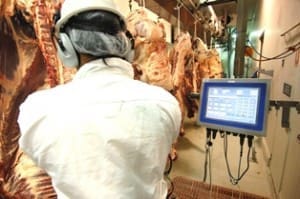EASTERN States beef kills fell to a four-month low last week, as supply of slaughter-type cattle continued to tighten, and Victoria’s COVID-related plant closures took effect.
While 2020 has been characterised since January by tight slaughter supply, the traditional mid-winter challenge is only making that cycle deeper as the industry heads into August.
 Last week saw an eastern states kill reached just 111,521 head, the lowest seven-day tally recorded in a full working week (not impacted by public holidays) since mid-March, when rain disrupted processing operations briefly.
Last week saw an eastern states kill reached just 111,521 head, the lowest seven-day tally recorded in a full working week (not impacted by public holidays) since mid-March, when rain disrupted processing operations briefly.
Victoria’s processing disruptions due to COVID were in clear evidence, with numbers across the state falling 13pc on the week before to 16,160 head, more than 36pc below the same week last year.
Some companies involved in Victorian plant closures are making arrangements to kill cattle elsewhere – either in other processing facilities owned by the same company (JBS is killing more cattle originally intended for Brooklyn at its Scone facility in NSW, for example), or through service kills at other Victorian or interstate sites. Some Victorian cattle are heading as far north as Queensland and west into South Australia, Beef Central was told.
That is supported by last week’s kills in NSW, up 3pc on the previous week to 31,575 head, and South Australia, up 25pc on the previous week to 4073 head.
Elsewhere, Queensland’s kill is being seriously impacted by cattle short supply, back 9pc last week to 54,745 head. That’s down 9pc on the previous week and 32pc lower than last year, when drought-fuelled kills were in full cry.
Even plants that traditionally have a reliable ‘backbone’ of grainfed cattle from company-owned feedlots are coming under supply pressure. One large Queensland facility is currently killing around one day less each week of grainfed cattle than normal.
Female slaughter also continues to decline, as a percentage of overall kills. Queensland’s female cattle kill last week, at just over 23,000 head, represented just 42pc of the state’s overall slaughter. The female kill number for Queensland was down a colossal 46 percent on this time last year.
MLA’s mid-year industry projections update issued this morning suggested that limited supply availability, exacerbated by intense restocker activity in the store market and heightened stock retention, is expected to see national beef production track well below 2019 levels for the remainder of the year.
The limited availability of steers for finishing was highlighted in the male component of total slaughter for the year-to-May, with bulls, bullocks and steers totalling only 1.49 million head, the lowest level since 1987, MLA analyst Adam Cheetham said. A combination of drought-driven destocking, consecutive years of low branding rates and robust live export shipments had contributed to the decline in the number of male cattle on hand.
Grids steady
After the previous week’s downwards adjustments to grid prices, most processor direct consignment offers on slaughter cattle are unchanged across Eastern Australia this week.
Some grid offers fell 20c/kg the week before.
Offers seen this morning from southern Queensland processors showed heavy four-tooth grassfed steers at 630-640c (some higher prices are for HGP-free only), with heavy cows 560-570c. Central Queensland offers are typically 10c/kg less than those rates.
Further south, publicly disclosed grid offers out of Wagga and Naracoorte this morning have heavy steers four-teeth at 615c, and cows 560c.
A large northern NSW export processor has forward offers this week for kills week commencing 17 August of 570c/kg on four-tooth ox and 550c on heavy cows.
